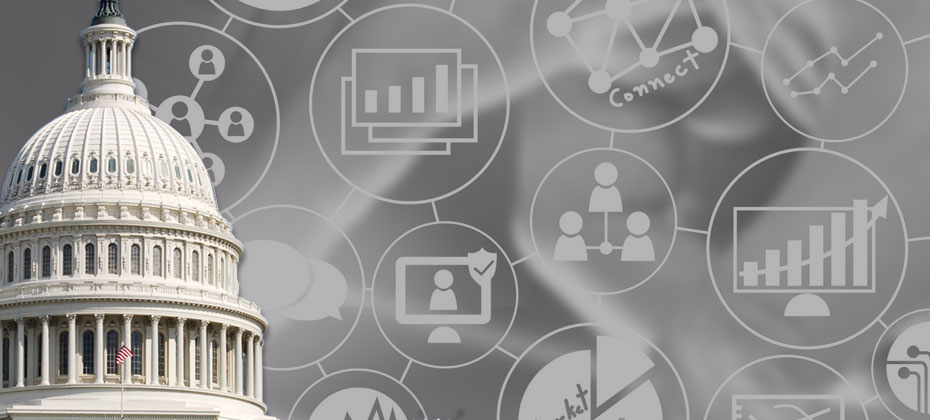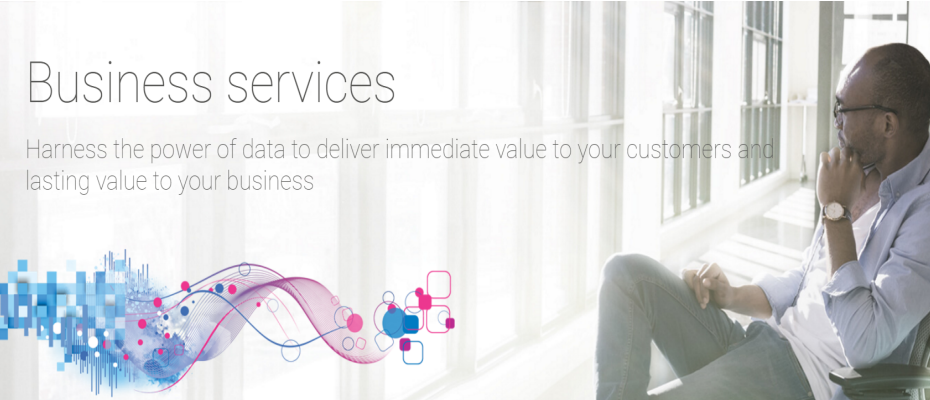All posts by Guest Contributor

Good job, check. Shared interests, check. Chemistry, check. He seems like a perfect 10. Both of you enjoy your first date and while getting ready for the second, you dare to imagine that turning into another and another, and possibly happily ever after. Then one decidedly unromantic question comes to mind: What is his credit score? Reviewing a potential partner’s credit score and report is important to many singles who are looking for lasting love. According to Bankrate.com, 42 percent of Millennials said that knowing someone’s credit score would affect their desire to date them, slightly more than 40 percent of Gen Xers and 41 percent of Baby Boomers. They may be on to something. Research shows that knowing someone’s credit history and sense of financial responsibility could save people time – and potential heartache. A UCLA study about money and love shows a very strong link between high credit scores and long-lasting relationships. People with drastically different credit scores may experience more financial stress down the road, placing a burden on a relationship. An Experian report reveals 60 percent of people believe it’s important for their future spouse to have a good credit score, and 25 percent of people from the UCLA study were willing to leave a partner with poor credit before marriage so they aren’t held back. While that three-digit number doesn't tell a person’s whole financial story, it can reveal financial habits that could impact your life. Banks are wary of making loans to borrowers with tarnished scores, typically 660 and below. A low score could quash dreams of buying a home, and result in steep interest rates, up to 29 percent, for credit cards, car financing and other unsecured loans. A mid-range credit score can also hurt an application for an apartment and drive up the cost of mobile phone plans and auto insurance. Eight states have passed laws limiting employers’ ability to use credit checks when assessing job candidates, yet 13 percent of employers surveyed by the Society of Human Resource Management performed credit checks on all job applicants. Talking spending styles and revealing credit scores sooner rather than later in a relationship isn’t necessarily comfortable. But it may help you decide whether you have compatible financial outlooks and practices.

The consumer economy has evolved dramatically over the past few years — in large part due to technology and access to large amounts of data. Credit data, especially, can be a powerful asset for financial institutions in this new environment. More than 88 million U.S. consumers use their smartphone to do some form of banking. 67% of consumers made purchases across multiple channels in the last six months. With the help of data scientists, financial institutions can build models that crunch huge volumes of data and append their own customer data to drive portfolio management, customer acquisition and collections decisions across digital and mobile channels. Learn more>

Big changes for the new year 2017 is expected to bring some big changes. But what do those changes mean for the financial services space? Here are 3 trends and twists Experian expects to occur over the next 12 months: Trump and the Republican-controlled Congress will move forward with a deregulatory agenda. Recognizing and scoring more previously invisible consumers through alternative data sources will be emphasized. Personalized credit offers delivered via multiple digital channels in a sequenced, trackable manner. What are your predictions for 2017? Only time will tell, but we’re certain that regulations and advancements in digital will be huuuge. >>More 2017 trends

The market is inevitably changing, and while batch and daily alerts are still effective in tackling client and consumer challenges, you are probably seeing more real-time alerts. Perhaps you were at the auto dealership applying for a car loan and you got an instant alert on your mobile app revealing there was an inquiry pulled on your credit report. Or maybe you applied for a credit card online and instead of waiting for weeks to see if you got approved, you receive notification on the spot. It’s official. We live in a world where we want immediate and instant feedback, communication, and decisions. From a client’s perspective, this means getting a credit-event alert on a customer now vs. 24 hours later. Delays can sometimes mean the difference of losing or retaining a customer. In a recent Experian survey, findings revealed consumers expect to be notified of changes to their credit profile as they occur in real time. In fact, 90 percent of Experian Members said they place a “high value on real-time alerts.” To meet these consumer expectations, clients can consider implementing a trigger solution to offer real-time notifications on inquiries, security alerts and consumer disputes. These triggering events are pushed in real-time as opposed to a 24- to 48-hour turnaround when using standard daily triggers. What are inquiry and security alert triggers? Inquiry triggers cover 13 different industries and also fraud, theft, and active-duty military alerts. They are designed specifically for financial institutions that wish to monitor their existing customer base for account management, and for consumers wanting immediate awareness, education, and protection of their credit. How do real-time triggers work in the consumer dispute process? Dispute updates can be pushed out to the consumer in real-time as opposed to the standard dispute process that takes up to 30 days to receive an update. These triggers also include freeze, thaw and lift alerts pushed in real-time as opposed to the typical 24- to 48-hour turnaround when using standard daily triggers. These alerts are designed specifically for consumers wanting immediate awareness, education, and protection of their credit. Other than the speed of delivery, are there any other differences between daily vs. real-time triggers? Instead of having the files run nightly with the trigger report being sent to the client every morning through a STS delivery method, the real-time events are pushed via Cloud or STS delivery method. Clients can retrieve these events at their own pace. Implementation time takes around two weeks. Are there additional opportunities to utilize real-time triggers? In addition to real-time inquiry alerts designed for companies to monitor their existing customer base for retention purposes, Experian also offers real-time inquiry alerts for prospecting and marketing purposes. This means financial institutions can identify which consumers are shopping for new credit in real-time. As a result, immediate firm offers of credit or cross-sell offers could be sent to consumers before it’s too late.

As we enter 2017, it’s no surprise people are buying and selling online and using their mobile devices more than ever. At the close of November, Adobe released its online shopping data from Black Friday, Cyber Monday, and the overall holiday season. According to the data, the major November holiday shopping season was driving close to $40 billion in online and mobile revenue alone — a 7.4% increase year-over-year! Every year, we see tremendous growth in spending through online and mobile channels. Interestingly, this pattern is not just indicative of consumer spending and overall market confidence. The consumer pattern also illustrates a clear change in communication preferences — with the ever-present shift toward digital. In general, consumers are interacting more and more through both online and mobile channels for all of their personal needs, including banking and financial services; and the lending community is anxious to continue connecting to consumers where they need them most. No longer is digital communication the “cool thing to do,” but rather it is essential. While Experian’s lending customers still find tremendous success in direct mail prospecting, many financial institutions are preparing to implement an enhanced acquisition strategy in 2017. This strategy includes multi-channel prospecting initiatives to present consumers with preapproved credit offers. In addition to direct mail, our customers are evaluating digital channels such as email, mobile, and other online channels to improve the overall consumer experience and responsiveness. In the latest Digital Banking Report, published in July 2016, email is the top channel financial marketers are turning to for cross-channel marketing after the initial onboarding process (as illustrated in chart 49), but you can see social media and retargeting are rising in the ranks. In Sept., 2016, Experian was named one of the top 100 most innovative companies for a third year by Forbes magazine. A key part of that success was driven by investments in Experian’s Data Lab and Experian Marketing Service’s Audience Engine, which is an audience management platform that changes the way the advertising industry buys and measures media. We are focused on meeting our customers and the consumer where they need us most. Bottom line? As you refine your goals for 2017, the financial services sector should dig deeper when making connections. They must reach consumers where they want to connect – and that means a successful credit marketing strategy will be one that includes both direct mail and digital communications. A new year is the perfect time to re-evaluate those same-old, same-old marketing and acquisition tactics. We're not saying you need to abandon direct mail, but it is certainly time for lenders to complement their direct mail efforts with a savvy digital plan as well. Resolve to do it better in 2017.

The holidays are behind us, the presents are unwrapped, resolutions have been made and may already be broken. For many, it’s the most depressing time of the year as the reality of holiday spending settles in. According to the American Consumer Credit Council the average American spends $935 on gifts each holiday season. A recent report by Mintel showed the average consumer held $16,000 in debt at the end of 2015. Now is the time to reach out to consumers who may be suffering from a financial hangover; an Experian study revealed consumers typically look to personal loans for help with credit card debt in the second quarter of each year. What’s the best way to reach these consumers? Direct mail is still one of the most successful paths. Here are four keys to securing new personal loan customers via direct mail marketing: Focus on education: Some of the most successful direct mail campaigns for personal loans in 2015 focused on educating consumers about personal loans first, and then showing options for debt consolidation. Consumers are weary of trusting new lenders, according to Mintel, with 50% viewing them as riskier than banks and credit unions. Marketplace and online lenders should take the extra step of introducing their brand and showing their product as a safe option. Highlight the use of the loan: Consumers generally have a negative attitude toward debt, with 72% feeling uncomfortable holding any type of debt. Stressing that personal loans are a responsible tool for consolidating debt is critical. Some effective campaigns listed the top three reasons to choose a personal loan, while others used customer testimonials to show how a personal loan was used and how they benefited. Provide a competitive comparison: Another way to highlight the benefits of personal loans is by comparing the fixed rates and payments of a personal loan to credit cards. Many consumers consolidate credit card debt to one card immediately after the holidays, according to the Experian study. Simply showing the long-term benefit of a personal loan versus credit card is often enough to trigger action. Personalize the offer: Lenders are delivering more personal, relevant offers that are tailored to the interests of each recipient through the use of the latest personalization technology. For example, highlight the recipient’s specific qualifying loan amount or the qualifying loan rate for which they are eligible. Unsecured loans have experienced growing popularity in the last several years, and originations are poised for a seasonal peak in the coming months. Are you ready?

Experian integrated Cloudera Enterprise onto its cloud environment so clients can make innovative decisions in milliseconds with data as the core technology.

Internet-connected devices provide endless possibilities, but they rely on technology and collected data to deliver on their promises. This can compromise your network security. Follow these tips to enjoy the conveniences provided by Internet of Things devices while keeping your network safe. Look for devices that use end-to-end encryption. Change default passwords before connecting devices to your network. Enable two-factor authentication, when available. Leverage all security options, such as passwords, encryption, firewalls and firmware. The Internet of Things is only as strong as its weakest link. That's why it’s so important to understand and treat each connected device as part of a broader network. More security tips

The holidays can be a stressful time for consumers — and an important time for lenders to anticipate the aftermath of big credit card spending. According to our recent study with Edelman Intelligence: 56% of respondents said holiday shopping puts a strain on their finances. 43% said the stress of holiday shopping makes it difficult to enjoy the season. With the holiday shopping season over, those hefty credit card statements are coming soon. Now is the time for lenders to prepare for the January and February consolidations. Want to know more?

Using digital technology like a big bank How was your holiday? Are the chargebacks rolling in yet? It’s no secret - digital technology like mobile device usage has increased significantly over the years, making it a breeding ground for fraudsters. As credit unions continue to grow their membership, their fraud security treatments need to grow as well. Bigger banks are constantly updating their fraud tools and strategies to fight against cybercrime and, therefore, fraudsters are setting their eyes on credit unions. Even as I write this, fraudsters are searching and targeting credit unions that don’t have their mobile channel secured. They attempt to capitalize on any weakness or opportunity: Registering stolen cards to mobile wallets Taking over an account via mobile banking apps Using a retailers’ mobile app to make fraudulent payments Disabling the SIM card in the victim’s phone and diverting the one-time password sent through text message to their own phones These are clever ways to commit fraud. But credit unions are becoming wise to these new threats and are serious about protecting their members. They are incorporating device intelligence with a solid identity authentication service. This multi-layered approach is essential to securing mobile channels, and protecting your Credit Union from chargebacks. To learn more about our fraud solutions, click here.

As we kick off the new year, let’s take a look at some interesting things we learned about data quality in 2016. Our latest data quality report found some concerning statistics about companies and their data quality: 56% of organizations report losing sales opportunities due to bad data. 79% say data clearly ties directly to business objectives, but only 2% trust their data completely. 83% report that poor data quality impacts their business initiatives. Data is at the heart of your organization, and the quality of that data underpins the success of many of your business initiatives. Implementing a successful data quality program, therefore, is imperative to your organization’s future. Building a business case for data quality

Fraud and cybersecurity are two of the biggest risks challenging organizations and the economy today. Fraud has become its own industry, to the tune of $500 billion in estimated losses annually. To strengthen your fraud risk strategies, you need: A multilayered authentication and risk-based approach to prevent fraud. A comprehensive approach to identity with true customer intelligence. To avoid silos and recognize the value of combining your solutions into one platform. The rapid growth of fraud-related activity only reinforces the need for aggressive fraud prevention strategies and the adoption of new technology to prepare for the latest emerging cybersecurity threats. Want to know more?

Experian’s latest Market Trends and Loyalty report shows that for the first time in history, cars with four-cylinder engines have outpaced any other light-duty vehicle type on the road. That’s because the auto industry has been hard at work the past two decades improving both power and fuel efficiency of its engines. Auto manufacturers have been given aggressive fuel efficiency targets (54.5 mpg by 2025), but still need to meet consumer demand for performance. The net result is today’s average four-cylinder engine (188.1 hp) actually has more horsepower than the average V8 from 20 years ago (188 hp). It has helped four-cylinder engines become the most prominent engine type on the road, according to Experian Automotive Vehicles in Operation (VIO) database. Of the vehicles on the road, 37.7 percent are being powered by a four-cylinder engine, compared to 37.6 percent of six-cylinder engines. The top five vehicles at both the VIO and registration levels shows that all but one have four-cylinder engines. Top segments Total VIO Q3 vehicle registrations 1. Full-size pickup 1. Entry-level CUV 2. Standard midrange car 2. Full-size pickup 3. Small economy car 3. Small economy car 4. Lower midrange car 4. Standard midrange car 5. Entry-level CUV 5. Lower midrange car The four-cylinder VIO market share growth will continue in the future. In 2016, for example, four-cylinder engines accounted for 54.2 percent of all engines in new vehicles sold. It is the fifth consecutive year that four-cylinder engines had more than 50 percent market share. Market share for six-cylinder engines has dropped from 32.5 percent in 2012 to 29.7 percent in 2016, while eight-cylinder engines have dropped from 16.1 percent to 12.1 percent.

As 2016 comes to a close, many in the financial services industry are trying to assess the impact the Trump administration and Republican controlled Congress will have on regulatory issues. Answers to these questions may be clearer after President-elect Trump is inaugurated on Jan. 20. However, those in the federal regulatory environment are already exploring oversight and regulation of the FinTech and marketplace lending sector. Warning on alternative credit risk models Inquiries by federal and state policymakers over the past year have centered on how FinTech and marketplace lenders are assessing credit risk. In particular, regulators have asked about how credit models different from traditional credit scoring models and what, if any, new attributes or data are being incorporated into credit risk models for consumers and small businesses. On Dec. 2, Federal Reserve Governor Lael Brainard signaled that policymakers continue to be interested in this area during a wide-ranging speech on the potential opportunities and risks associated with FinTech. In particular, Brainard warned that “While nontraditional data may have the potential to help evaluate consumers who lack credit histories, some data may raise consumer protection concerns” and that nontraditional data “… may not necessarily have a broadly agreed upon or empirically established nexus with creditworthiness and may be correlated with characteristics protected by fair lending laws.” Brainard also suggested that there are transparency concerns with alternative scoring models, saying that “alternative credit scoring methods present new challenges that could raise questions of fairness and transparency” given that consumers may not always understand what data is used utilized and how it impacts a consumer’s ability to access credit at an affordable price. Look for regulators and Congress to continue to focus on the fairness and accuracy of new credit risk models and the data underpinning those models in debates surrounding FinTech and Marketplace lending in 2017. A national charter for FinTech? Earlier this month, the Office of the Comptroller of the Currency (OCC) announced that it was considering the creation of a national charter for FinTech lenders. There has long been speculation that the OCC would offer a national charter for FinTech. Analysts have suggested that the creation of a charter could help increase regulatory oversight of the growing market and also provide additional regulatory certainty for the emerging FinTech industry. The OCC’s proposal would create a special purpose national bank charter for FinTech businesses that are engaged in at least one of three core banking activities: receiving deposits; paying checks; or lending money. The OCC will be developing a formal agency policy for evaluating special purpose bank charters for Fintech companies that will designate the specific criteria that companies applying for a charter will have to meet for approval. OCC has suggested that this will likely focus on safety and soundness; financial inclusion; consumer protection; and community reinvestment. The OCC is collecting comments on the proposed policy through Jan. 15, 2017.

At Experian, we’re proud to be the backbone of financial progress. We’re making sense of data and information in powerful new ways. For example, we are: Opening credit bureaus in developing countries, where access to credit was virtually non-existent. Finding new ways to help consumers better understand credit and how to impact their financial future. Protecting consumers from identity theft and businesses from fraud. Volunteering our time and expertise to improve the communities in which we live and work. We’re investing in the future, through new technologies, talented people and innovations – all of it to help create a better tomorrow. Want to know more?